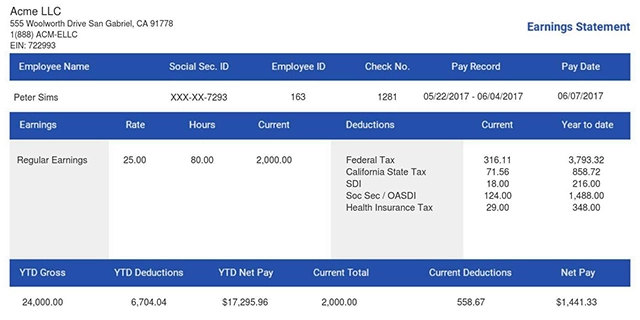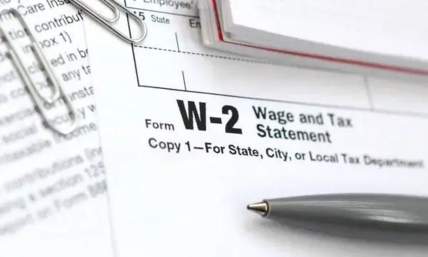How Short-Term Disability Insurance Keeps Your Income Secure
When you can't work because you're sick or hurt, short-term disability insurance acts as the buffer you need. It steps in to replace part of your salary, usually between 40% and 70%. This buffer for your work gap can last between three to six months.
Some employers make this available to their employees as part of the work package. If your job doesn't include this coverage, you can also buy an individual policy directly through a provider.
A short-term disability insurance does not just roll out into your account every time you cannot go to work. In this guide, you’ll find out what short-term disability insurance is. You’ll also be able to understand what counts as a qualifying condition for this insurance and how to extend it.
- What Is Short-Term Disability Insurance?
- How Does Short-Term Disability Insurance Work?
- Coverage Options: Employer-Sponsored vs. Individual Policies
- Who Pays Health Insurance While You’re on Short-Term Disability?
- How to File a Short-Term Disability Insurance Claim
- Qualifying Conditions vs. Common Exclusions
- To Sum It Up
What Is Short-Term Disability Insurance?
Short-term disability insurance is your safety net when life throws you a curveball. Whether it’s downtime from surgery, a serious illness, or the arrival of a new baby, this can affect your income. Instead of missing much-needed pay and waiting for your next paycheck, it will replace a chunk of your income. It covers you by up to 40% or 70% of your income until you are healthy enough to resume work.
Think of it as a bridge between short-term disabilities that occur on the job and off the job. Worker’s compensation takes care of on-the-job injuries, while short-term disability insurance steps in to cover everything else. You get coverage for non-work injuries, illnesses, and even pregnancy leave to help with the bills and focus on recovering.
How Does Short-Term Disability Insurance Work?
Short-term disability insurance might seem like just another benefit on paper, but it really does more than that. Imagine you sprain your ankle and can't clock in for work. You don't have to wait out an empty bank account. Instead, once your claim is approved and the brief waiting period passes. You'll receive a steady check to replace part of your usual paycheck.
-
Benefit Amount: Your insurer first considers your earnings and financial status before you get hurt or sick. You then get a percentage of this income sent to you every week. For example, if you made $1,000 per week, a 60% benefit would get you $600.
-
Elimination Period: In most cases, you have to wait a minimum of 7 days before your insurance is activated. What this means is you sometimes have to cover an entire week yourself. Providers do this to balance the risk of claims for very short absences.
-
Benefit Period: With short-term disability insurance, you can enjoy coverage for 13, 26, or even 52 weeks. It all comes down to your specific provider, the policy you chose and your disability situation. If your surgery means a three-month recovery, a 13-week benefit period has you covered
You will need to fill out a form with a note from the doctor attached that confirms you can't work. It undergoes a review process to confirm validity before sending in your weekly benefits.
Coverage Options: Employer-Sponsored vs. Individual Policies
When it comes to short-term disability insurance, you'll usually have two main options. Plans your employer arranges for you and policies you can buy on your own. They both do basically the same job, but differ based on who pays and what happens when you change jobs.
Employer-Sponsored Plans
-
Traditional (Non-Contributory): Employer pays full premium—no cost to you.
-
Contributory: Employee shares cost with the employer through agreed payroll deductions.
-
Voluntary/Buy-Up: Employees choose and fund additional coverage beyond what their employer offers.
Individual Policies
If your employer doesn't offer short-term disability insurance, you can get one for yourself. However, this short-term disability insurance not through employ means you'll be responsible for funding it yourself.
Who Pays Health Insurance While You’re on Short-Term Disability?
When you're on short-term disability, keeping your health insurance active can feel like an extra thing to worry about. Most employees remain on their employer's group health plan while they are on short-term disability leave.
-
Employer-Sponsored Group Plans: You stay on the same plan with your usual premium deduction ongoing. Your insurer can't drop you simply because you're disabled.
-
COBRA Continuation: If your group coverage from your employer runs out, you can opt into COBRA to extend your plan. As long as you do not mind covering the entire premium plus fees.
-
Individual Policies: You handle all premium payments yourself. So, automate them or mark your calendar to keep your health coverage uninterrupted.
How to File a Short-Term Disability Insurance Claim
Filing your short-term disability claim doesn't have to feel like wrestling an octopus. Doing it the right way means you get your benefits without any unnecessary delays:
Inform HR or the insurer right away: As soon as you know you'll be off work, inform your HR department or insurer. Early notification starts the clock on your claim and helps avoid paperwork backlogs.
Grab a concise doctor's statement: Ask your healthcare provider for a note that says what's wrong. They should include what treatment you need and when they expect you'll be cleared to return. It doesn't need to be a medical thesis—just enough to show why you can't clock in.
Let the insurer review your pay records: Your carrier will look back at roughly the last 12–18 months of your earnings. They use this to figure out your weekly benefit amount. Providing any recent pay stubs can help you speed this process up.
Watch the "elimination period": Most policies include a waiting window. It's often seven days for illnesses, sometimes none for accidents, before payments start. Mark your calendar so you know exactly when that first check should arrive.
Keep everyone updated on your recovery: If your doctor adjusts your return-to-work date or treatment plan, tell both HR and the insurer. A quick note ensures your benefits continue smoothly.
Qualifying Conditions vs. Common Exclusions
Not every health hiccup qualifies for short-term disability:
What Qualifies
-
Surgeries and serious illnesses with a potential downtime. Such as hospital stays, cancer treatments, or any other critical procedure.
-
Off-the-job accidents, like a car crash or a domestic accident, can count, just as long as they’re not work-related.
-
Routine maternity leave may not always apply. Although necessary situations like C-section recovery or preeclampsia generally do.
-
Severe mental health conditions like anxiety and depression are also included. They qualify as long as these behavioural health issues prevent you from doing your job.
What's Excluded
-
Pre-existing conditions. If you were already treating the issue before your policy started, there's often a waiting period before coverage kicks in.
-
Any harm you cause yourself intentionally or injuries from committing a crime will typically be denied.
-
Reconstructive work after an accident and aesthetic surgery don't qualify. Unless surgery is medically necessary.
If your claim arrives without up-to-date medical notes or a clear physician's signature, expect delays or denials. So double-check your forms before you hit "send."
To Sum It Up
Short-term disability insurance is a vital safety net you should not miss out on. Knowing your options helps, either with an employer plan or an individual policy. It also provides peace of mind, knowing that unexpected health setbacks won't affect your finances too much.
Do you need a seamless experience and professional documentation of your benefits? Consider generating clear, compliant pay stubs with our Pay Stub Generator. So every benefit payment is accurately reflected and ready for any administrative review.















